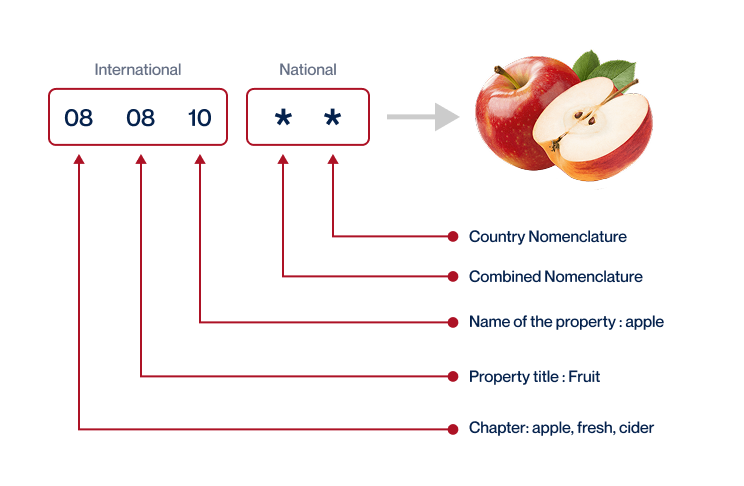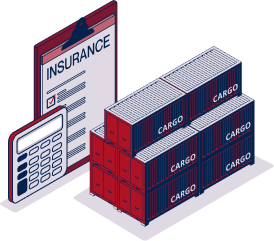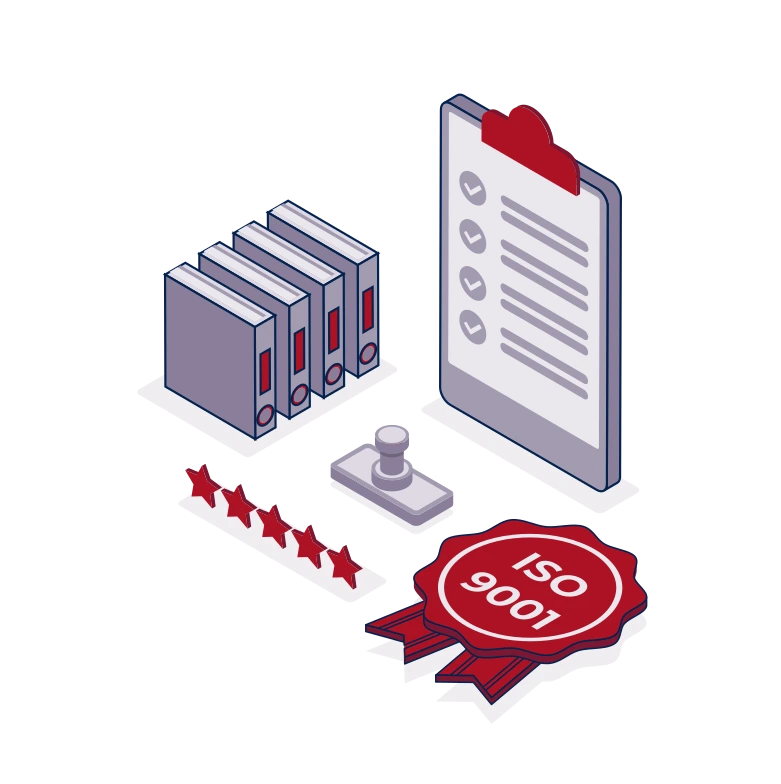Freight Shipping between Qatar and New Zealand | Rates – Transit times – Duties and Taxes
Ever wondered why camels don't ship packages? Because it's a Hump-Bump deal! But on a serious note, international freight between Qatar and New Zealand can often be a daunting task filled with complexities, such as deciphering rates, estimating transit times, and navigating customs regulations. These are just a hint of the many hurdles businesses can face.
This comprehensive guide will provide you with insight into various freight options, unravel the enigma of customs clearance, clarify duties and taxes, and offer tailored advice to simplify your shipping journey from Qatar to New Zealand.
The shipping process may be a steep learning curve, but we're here to flatten each bump along the way. If the process still feels overwhelming, let DocShipper handle it for you! We master all steps of your shipping process, turning the toughest challenges into a resounding success for your business.
Which are the different modes of transportation between Qatar and New Zealand?
Which are the different modes of transportation between Qatar and New Zealand? Shipping from the deserts of Qatar to the green pastures of New Zealand? Think of it as a marathon, not a sprint. The long-distance journey eliminates road and rail options right off the bat. This leaves air and sea transport. Choosing between them is like deciding whether to ride a racing car or a cruise ship. Fast but expensive, or slower yet cost-effective. Your cargo, budget, and timing needs will determine the racehorse in this shipping derby. This section will help you understand and pick your winning transport. A well-informed choice here could result in unprecedented business advantages. Stay tuned!
Need help with your shipment?
Need assistance with your shipment? Dont hesitate to contact us even for a simple question. Choose the option that suits you
Live chat with an expert Chat on WhatsApp Free Quote 24hHow can DocShipper help you

Sea freight between Qatar and New Zealand
Trade ties between Qatar and New Zealand have flourished over the years, with frequent ocean shipping connecting the commercial heartlands of both nations. Key cargo ports like Hamad in Qatar and Tauranga in New Zealand act as bustling trade conduits. Despite sea freight being slower than other methods, it’s an economical choice for shipping high-volume goods, offering considerable savings.
However, the process is not without its challenges. Shippers often fumble with the complexities of international shipping; inaccurate documentation, or not understanding specific port regulations, can cause significant delays and unexpected costs. But fret not! In this guide, we delve into the intricacies and best practices of ocean shipping between these two countries, articulating pain points you may encounter, and how to deftly sidestep them. Think of it like a well-charted map for your seafaring journey: full of pertinent tips, ins and outs of processes, and the secret to smooth sailing in international freight forwarding.
Main shipping ports in Qatar
Port of Hamad
Location and Volume: Touted as the largest port in the Middle East, the Port of Hamad is located on Qatar’s southeastern coast, stretching across 26 square kilometers. With an annual capacity of 7.8 million twenty-foot equivalent units (TEUs), it handles the bulk of the country’s import/export trade.
Key Trading Partners and Strategic Importance: The port primarily liaisons with key trading partners such as the United Arab Emirates, India, and China. Through the years, significant growth in Qatar’s natural gas industry has elevated the port’s strategic importance.
Context for Businesses: Are you looking to expand into Qatar’s burgeoning gas and oil market? The Port of Hamad, with its mammoth infrastructure and state-of-the-art customs facilities, may be pivotal in meeting your logistical needs.
Port of Doha
Location and Volume: The Port of Doha, located in the heart of Qatar, has been serving as a vital maritime hub for decades. While its handling capacity is significantly smaller compared to other ports, the port holds its own in terms of strategic importance.
Key Trading Partners and Strategic Importance: With major trade connections to India, Saudi Arabia, United Arab Emirates, and other Middle Eastern countries, the port’s strategic location facilitates time-critical shipments.
Context for Businesses: If your business demands quick and hassle-free customs procedures, Port of Doha, with its efficient customs administration, can be an asset to your logistics while shipping goods.
Port of Mesaieed
Location and Volume: Situated 36 kilometers south of Doha, the Port of Mesaieed is another significant port contributing to Qatar’s maritime commerce. This industrial port handles a wide array of cargo including bulk, general, and containerized goods.
Key Trading Partners and Strategic Importance: The port actively trades with India, the UAE, Saudi Arabia, and several South and Southeast Asian countries. Its strategic importance is high due to the vast industrial city surrounding it, housing numerous petroleum, gas, and manufacturing companies.
Context for Businesses: If your enterprise deals with industrial materials, the Port of Mesaieed flaunting efficient cargo handling, and proximity to a massive industrial area, may serve as a game-changer in streamlining your supply chain.
Main shipping ports in New Zealand
Port of Auckland
Location and Volume: Strategically located within the city of Auckland, this port plays an essential role in New Zealand’s trade, handling approximately 1.58 million TEUs annually.
Key Trading Partners and Strategic Importance: Trading partners include Australia, China, and various Pacific Islands. The port supports New Zealand’s economy significantly, contributing over NZ $21 billion annually.
Context for Businesses: If your aim is to establish business links with markets in Australia and the Pacific Islands, the Port of Auckland could be a strategic part of your logistics plan due to its substantial trade links and high shipping volume.
Tauranga Port
Location and Volume: Located in Bay of Plenty, Tauranga is New Zealand’s busiest port in terms of cargo volume, handling around 26.9 million tons annually.
Key Trading Partners and Strategic Importance: Tauranga Port has strong trade ties with a number of Asian countries and Australia. It makes a significant contribution to the region’s economy and has a broad service offering.
Context for Businesses: For businesses looking to grow trade relationships with key Asian markets and Australia, particularly in the agricultural sector, leveraging the capabilities of Tauranga Port would be a sound strategy.
Port of Napier
Location and Volume: Positioned in Hawke’s Bay, the Port of Napier handles roughly 5.4 million tons of cargo annually.
Key Trading Partners and Strategic Importance: Key trading partners include China and the United States, particularly for wine exports. The port plays a key part in supporting the local fruit export industry, especially apples.
Context for Businesses: If you are looking to export perishable goods such as fruits and wine, specifically to China and the U.S., the Port of Napier could be your ideal choice with its refrigerated cargo services and substantial connections.
Port of Lyttleton
Location and Volume: Located on the east coast of the South Island, Lyttleton Port handles over 400,000 TEUs annually.
Key Trading Partners and Strategic Importance: The port has significant trading relationships with the Asian market, specifically China, Japan, and South Korea. It is also a primary outlet for the South Island’s coal exports.
Context for Businesses: Businesses aiming to tap into Asian markets, particularly in the sectors of coal, agricultural, and forestry products, might consider the Port of Lyttleton as an integral part of their logistics.
Port of Nelson
Location and Volume: Situated in Nelson, this port processes approximately 3.6 million tons of cargo per year.
Key Trading Partners and Strategic Importance: The port has major trade relationships with Australia and the Pacific Islands, mainly for agricultural commodities.
Context for Businesses: If your businesses are oriented towards the home industries and the export of goods to Australia and the Pacific Islands, particularly agricultural commodities, the Port of Nelson holds strategic value for your transportation needs.
Port of Wellington
Location and Volume: Found in New Zealand’s capital city, the Port of Wellington manages around 1.25 million tons of cargo each year.
Key Trading Partners and Strategic Importance: Major trading connections are primarily with Australia and China. The port’s central location and amenities give it a unique strategic importance.
Context for Businesses: If you’re targeting markets in Australia and China, the Port of Wellington, with its prime location and links, could be a clever addition to your logistics strategy.
Should I choose FCL or LCL when shipping between Qatar and New Zealand?
Embarking on a shipping journey from Qatar to New Zealand? Dive deeper into your sea freight options: Full Container Load (FCL) and Less than Container Load (LCL), or consolidation. These aren’t mere ‘options’; they’re strategic moves to streamline your cost, delivery time, and overall shipping success. Let’s demystify these paths, unravel their unique considerations, and guide you in making a well-tailored, informed decision. Rest assured, mastering FCL and LCL isn’t just about ‘sending a shipment’; it’s about ‘sending it smartly’. Ready to unravel the sea freight mystery? Hop on board!
Full container load (FCL)
Definition: FCL or Full Container Load shipping occurs when a single shipper books an entire container for their goods. This mode of shipping provides added safety as the container is sealed at the origin and remains undisturbed until the destination.
When to Use: FCL shipping is most cost-effective when you have high volume cargo. It's the right choice when your cargo is more than 13/14/15 cubic meters (CBM). Offering more security and efficiency, it's perfect for larger, heavier shipments.
Example: For instance, an auto parts manufacturer in Qatar shipping a sizable order to a client in New Zealand would typically prefer FCL shipping. They might use a 20'ft or 40'ft FCL container to accommodate the bulk shipment.
Cost Implications: When requesting an FCL shipping quote, consider that while per unit cost may seem high, it becomes considerably cheaper for large volume shipments. Also, your goods are generally safer from damage, reducing potential loss. Remember, costs for a 20'ft container might vary from a 40'ft container based on capacity and shipping route.
Less container load (LCL)
Definition: LCL (Less than Container Load) shipment is a method of ocean freight where your goods aren't enough to fill a full container, so they're consolidated with other goods. You only pay for your reserved space, rather than the whole container.
When to Use: LCL is cost-effective and more flexible for low-volume freight. If your cargo volume is less than 13-15 Cubic Meters (CBM), then LCL freight is likely your best option.
Example: Let's say you own a small furniture company in Qatar and need to ship 7 CBM of chairs to New Zealand. It wouldn't be cost-effective to book a full container; instead, an LCL shipment allows you to only pay for the space taken up by your goods.
Cost Implications: Compared to full container shipping, LCL can significantly reduce your costs as you're only paying for your cubic meter allocation. However, bear in mind that although the shipping price might be lower, handling charges at both the departure and destination ports are usually higher because your shipment is consolidated with others, and requires extra work to segregate upon arrival.
Hassle-free shipping
Unsure if consolidation or full container shipment is right for your business? DocShipper can streamline the process. Our ocean freight experts consider the weight, volume, and nature of your goods, as well as time sensitivities, to offer you the best route between Qatar and New Zealand. Trust us to make your international shipping seamless and stress-free. Ready to embark on a hassle-free journey with your freight? Contact us now for a free estimation.
With an average transit time of 29-45 days, sending goods from Qatar to New Zealand by sea freight might feel lengthy. However, this duration isn’t arbitrary. Factors such as the specific ports used, the weight, and the kind of goods shipped impact the transit times significantly. For businesses seeking precision, getting a tailored quote from a freight forwarder like DocShipper provides a more accurate estimate.
Here are the main freight ports in Qatar and New Zealand, with the average transit times:
| Qatar Ports | New Zealand Ports | Average Transit Time (Days) |
| Ras Laffan | Auckland | 29 |
| Al Wakrah | Lyttelton | 32 |
| Mesaieed | Tauranga | 30 |
| Hamad | Napier | 31 |
*Remember, these are averages and may vary based on the details of your specific shipment. Reach out to DocShipper for precise timing.
How much does it cost to ship a container between Qatar and New Zealand?
Gauging the shipping cost for a container between Qatar and New Zealand is quite dynamic, with ocean freight rates fluctuating from $25 to $100+ per CBM, often influenced by the Point of Loading, Point of Destination, your chosen carrier, the nature of goods, and monthly market fluctuations. This variability renders a precise, blanket estimate futile. We understand this might seem complex, but worry not! Partner with our shipping specialists who meticulously work to ensure you land the best rates. We provide personalized quotes, understanding your unique situation and devising an optimum, cost-effective solution. Our promise is to stand by you in every step of your shipping journey.
Special transportation services
Out of Gauge (OOG) Container
Definition: An OOG container is a special shipping module for cargo that surpasses the dimensions of standard containers.
Suitable for: Out of Gauge cargo is particularly ideal for hauling that exceptionally heavy or oversized equipment that cannot fit within normal containers.
Examples: Complex machinery, large-scale projects, and heavy equipment such as construction materials, power generators, or drilling rigs.
Why it might be the best choice for you: When you have goods that won’t fit into standard containers, an OOG container offers the flexibility you need while ensuring safety during transit from Qatar to New Zealand.
Break Bulk
Definition: Break bulk refers to cargo that is loaded individually onto a vessel rather than in a container, often on pallets or in sacks, bags, or boxes.
Suitable for: This is an effective choice for loose cargo loads that are irregularly shaped or sized.
Examples: Items like timber, steel bars, or machinery that exceed standard container dimensions yet aren’t suitable for bulk shipping.
Why it might be the best choice for you: Break bulk offers your business the ability to ship large, non-standard items without the need for special containers, providing a cost-effective solution.
Dry Bulk
Definition: Dry bulk shipping entails the transportation of homogeneous commodities in large quantities such as grains, coal, or minerals.
Suitable for: Products that can be poured directly into a ship’s hold.
Examples: Industrial commodities like iron ore, cement, or fertilizer.
Why it might be the best choice for you: If your business deals with significant quantities of dry, loose raw material, the dry bulk method will ensure efficient transportation across vast distances, like the route from Qatar to New Zealand.
Roll-on/Roll-off (Ro-Ro)
Definition: A ro-ro vessel is designed to load and discharge cargo that can be driven directly into it on their own wheels or using a platform.
Suitable for: Transporting large, motorized vehicles that cannot fit into standard shipping containers.
Examples: Cars, buses, trucks, or heavy construction machinery.
Why it might be the best choice for you: If your business relies primarily on shipping motorized equipment or vehicles, the ease and efficiency of Ro-Ro services make it an optimal choice.
Reefer Containers
Definition: Refrigerated containers, also known as reefer containers, are a type of shipping container with powerful refrigeration units for temperature-controlled storage.
Suitable for: Foods and pharmaceuticals that need consistent temperatures to preserve quality and longevity.
Examples: Fresh fruits, vegetables, meat or dairy products, and certain types of medication.
Why it might be the best choice for you: When your goods are temperature-sensitive and need to maintain their freshness or effectiveness during transit, then opting for reefer containers is a fortuitous choice.
Although navigating the intricacies of international shipping can seem daunting, DocShipper will guide you through, ensuring that your cargo arrives in perfect condition from Qatar to New Zealand. Explore your options with us today, and receive a free shipping quote in less than 24 hours.
Air freight between Qatar and New Zealand
Flying goods from Qatar to New Zealand? Consider air freight. This superfast method is like the express delivery guy of the skies, perfect for delivering your tiny yet high-priced treasures. Think pricey perfumes, smartphone parts or essential medicines. Why? It’s fast, reliable, and yes, cost-effective for smaller packages.
Now, let’s debunk the pitfalls. Often, shippers stumble on improperly calculating costs—like a student miscalculating math homework, they don’t use the right weight formula and boom—they’re paying more than anticipated. But don’t let this be you! Stay tuned as we break down the nitty-gritty of best air freight practices, to ensure your shipments are priced right and don’t burn a hole in your wallet.
Air Cargo vs Express Air Freight: How should I ship?
Transporting your goods between Qatar and New Zealand, and can’t decide what’s best? Welcome to the world of air cargo and express air freight, with each offering its own perks. Think of air cargo as your hardworking team player flying alongside other shipments in an airline, while express air freight’s your standalone star player in its dedicated plane, ready to zoom off at the drop of a hat. Let’s explore these two options deeper.
Should I choose Air Cargo between Qatar and New Zealand?
Opting for air cargo between Qatar and New Zealand could meet your budgetary needs. Airlines such as Qatar Airways Cargo and Air New Zealand both offer reliable, cost-effective shipping. However, be aware transit times could be longer due to fixed schedules. Additionally, air cargo becomes increasingly economical with 100/150 kg (220/330 lbs) of cargo. Learn more about their services on their official websites: Qatar Airways Cargo and Air New Zealand Cargo.

Should I choose Express Air Freight between Qatar and New Zealand?
Express air freight is a specialized service for fast, efficient delivery. Not sure if it’s right for you? It’s optimal for items under 1 CBM or 100/150 kg (220/330 lbs). Notable courier firms offering this service include FedEx, UPS, and DHL. Using these, your goods can bypass the airport queues that regular cargo faces. Packed in smaller units, express air freight aligns perfectly with time-sensitive goods, ensuring a faster, secure delivery from Qatar to New Zealand. Both cost-effective and quick, it could be the best shipping solution for your smaller, essential shipments.

Main international airports in Qatar
Hamad International Airport
Cargo Volume: Hamad International Airport processed 2.7 million tonnes of cargo in 2022, demonstrating its substantial capacity for freight movement.
Key Trading Partners: As a centrally located transit hub, it serves numerous international routes, with key trading partners in East Asia, Europe, and North America.
Strategic Importance: The strategic importance of Hamad International lies in its geographic location that connects traffic between the East and West and its home to Qatar Airways’ cargo freight division.
Notable Features: Hamad International is equipped with state-of-the-art cargo facilities, which include three temperature-controlled zones and areas dedicated to valuable cargo, making it one of the most advanced airports globally in terms of goods handling.
For Your Business: If your business requires robust capacity, strong global connections, and high service standards, Hamad International’s cargo services, modern facilities, and extensive network is well-suited to accommodate your shipping needs.
Doha International Airport
Cargo Volume: While mainly being replaced by Hamad International, Doha International still operates and processed 445,000 tonnes of cargo in 2022.
Key Trading Partners: Historically, key trading partners for Doha International are the same as those of Hamad, due to the strategic location of Qatar.
Strategic Importance: Although smaller than Hamad International, Doha International Airport maintains a strategic standby position. As it is still operational, it provides additional capacity during peak seasons or disruptions.
Notable Features: The airport has designated cargo facilities and has previously handled large cargo volumes. Doha International typically handles cargo flights during busy periods to ease congestion at Hamad International.
For Your Business: Should there be excess demand at Hamad International, Doha International represents a strong plan B for your goods’ shipment to ensure reliable transportation and delivery.
Main international airports in New Zealand
Auckland Airport
Cargo Volume: Around 2 million tons per annum
Key Trading Partners: China, United States, Australia
Strategic Importance: Known as the gateway to New Zealand, it serves as the main hub for international air freight.
Notable Features: Comes equipped with modern freight handling and storage facilities.
For Your Business: With a robust network of international flights, shipping to and from Auckland may provide the fastest and most efficient service.
Christchurch Airport
Cargo Volume: Approximately 30,000 tons of cargo handled annually
Key Trading Partners: Australia, Asia, North America
Strategic Importance: It is a key player in the South Island’s export supply chain and a major economic driver.
Notable Features: With specialist handlers in perishable goods, the airport is ideal for shipments of fresh produce or livestock.
For Your Business: Its strategic location and comprehensive freight services can deliver a cost-effective solution if your business is oriented towards Asia or Australia.
Wellington International Airport
Cargo Volume: Handles roughly 9000 tons annually
Key Trading Partners: Australia, Pacific Islands
Strategic Importance: As the central pivot, it’s crucial for transits and domestic cargos.
Notable Features: Equipped with efficient customs clearing facilities for smooth freight movement.
For Your Business: With regular flights to Australia and the Pacific, Wellington may be the best choice for regional trades and smaller shipments.
Queenstown Airport
Cargo Volume: Handles between 1500-2000 tons per annum
Key Trading Partners: Australia, China, United States
Strategic Importance: Key tourist destination, with provisions for heavy goods and retail shipments.
Notable Features: Despite being a smaller airport, it has highly efficient goods tracking and logistics services.
For Your Business: If your business is focused on the retail market or regular, smaller shipments, Queenstown offers an efficient and consistent service.
Dunedin Airport
Cargo Volume: Approximately 1000 tons per annum
Key Trading Partners: Australia, Pacific Islands
Strategic Importance: Key shipping point for the southern region, handling a substantial cargo including fresh produce.
Notable Features: Noted for its efficient operation of fresh produce exports.
For Your Business: If you operate within food production or related industries, Dunedin’s efficient procedures will ensure your cargo arrives fresh and in optimal condition.
How long does air freight take between Qatar and New Zealand?
On average, shipping between Qatar and New Zealand by air freight typically ranges from 3 to 7 days. However, it’s important to understand that this timeline can fluctuate depending on several factors. Specific airports involved, the weight of your shipment, as well as the nature of the goods being shipped can all affect transit times. Consequently, to nail down more exact times for your shipment, don’t hesitate to consult a freight forwarder like DocShipper.
How much does it cost to ship a parcel between Qatar and New Zealand with air freight?
When shipping air freight between Qatar and New Zealand, estimated costs can range widely, from $3 to $10 per kg, depending on numerous variables. An exact quote is hard to pin down without specifics like airport distances, parcel dimensions, weight, and the nature of goods. Rest assured, our experienced team treats each case individually and works diligently to secure the most competitive rates for you. Our promise: detailed, fair quotes crafted to meet your unique needs. Want a taste of our personalized service? Contact us and receive a free quote in under 24 hours.
What is the difference between volumetric and gross weight?
Gross weight refers to the actual weight of your shipment, including the product, packaging, and any fillers. It’s simply measured on a scale and often given in kilograms. On the other hand, volumetric weight, also known as dimensional weight, represents the volume that a shipment occupies in relation to its actual weight. It’s based on the size of your shipment rather than the weight.
Air cargo and Express Air Freight service providers calculate volumetric weight by multiplying the length, width, and height of the package and then dividing the result by a specific volumetric factor. In the airline industry, the standard volumetric factor is generally 6000 cubic centimeters per kilogram. Express air freight services might use a different factor, such as 5000 cc/kg.
Consider this example: You have a package measuring 50 cm × 40 cm × 30 cm and the gross weight is 20 kg. The volumetric weight = 50 × 40 × 30 / 6000 = 10 kg (or 22 lbs). Since the gross weight (44 lbs) is higher than the volumetric weight, the air cargo freight would be calculated based on 20 kg.
Charging by the higher of the gross or volumetric weight, known as the ‘chargeable weight’, ensures carriers are compensated not only for the weight of the shipment but also the space it occupies. Understanding these principles allows you to optimize your packaging, avoid surprises, and effectively control shipping costs.

Door to door between Qatar and New Zealand
Door to Door shipping is an all-inclusive service that revolutionizes how we move goods globally. It’s a fuss-free solution for your Qatar to New Zealand freight needs, simplifying logistics while providing tracking, customs clearance, and delivery at your doorstep. Benefits? Efficiency, cost-effectiveness, and less hassle for you. Ready to streamline your shipping? Let’s dive in!
Overview – Door to Door
When shipping from Qatar to New Zealand, the complexities of arranging transport and customs clearance can feel overwhelming. That’s where our Door to Door service steps in! Offering a stress-free solution, businesses appreciate its convenience as it handles everything from logistics to administrative work. However, while highly sought-after for its ease, this method may be costlier than others and takes extra time for delivery, given the comprehensive service. But if the idea of a hassle-free shipping experience appeals to you, consider Door to Door. It can save you time and help avoid the confusion typically associated with international shipping. Make it simple with DocShipper!
Why should I use a Door to Door service between Qatar and New Zealand?
Ever tried juggling flaming swords while doing pirouettes? That’s what coordinating international freight shipments can feel like! So, why not consider the door-to-door service from Qatar to New Zealand? Here are your five compelling reasons why.
1. No More Logistics Gymnastics: Leave the hard tricks to the circus professionals. Door-to-door service means we handle the trickiest part, picking up the goods straight from your premises. Trust us to cartwheel through every logistical hurdle, so you don’t have to.
2. The Fast Lane to Delivery: Time waits for no shipment, especially yours. Choose door-to-door service when it’s a race against the clock. With a streamlined process and minimal handovers, your goods will be on the fast track to their final destination in no time.
3. Complex Cargo? No Problem: Fragile, perishable, or just downright trickier than a Rubik’s Cube? Door-to-door service offers specialist care for complex cargo, ensuring it arrives unscathed and intact. We treat each package like it’s our porcelain tea set.
4. The Convenience Factor: Leaning into convenience is never a bad thing, right? Why worry about trucking arrangements when we can take over? Let us navigate the road maze from the entry port to the final stop. Relax, your shipment’s got a chauffeur.
5. Peace of Mind: Expect a clear head and calm nerves. With a door-to-door service, you’ll know who’s accountable every step of the way. You get to lift those heavy logistic weights off your shoulders and wave that stress goodbye.
To sum it up, door-to-door service is like the virtuoso of the international shipping band, handling all the high notes and complex rhythms with professionalism and ease. So, why not give it a try?
DocShipper – Door to Door specialist between Qatar and New Zealand
Ease your shipping woes with DocShipper’s proficient door-to-door service between Qatar and New Zealand. From packing to customs clearance, we manage every step for you. Leveraging extensive expertise across all shipping methods, our dedicated Account Executives ensure a seamless experience. Connect with us for a stress-free shipping journey and get a free estimate in less than 24 hours! For immediate advice, our consultants are ready to chat. Let DocShipper pave your path to simple, hassle-free international freight forwarding.
Customs clearance in New Zealand for goods imported from Qatar
Navigating the complexities of customs clearance, particularly from Qatar to New Zealand, can be a jungle of unexpected charges and daunting paperwork. Without a clear understanding of duties, taxes, quotas, and licenses, your goods can quickly get trapped in customs, inflicting damaging costs and delays. This crucial process isn’t for the fainthearted – but don’t worry! In the coming sections, we’ll break down this maze for you, examining all the critical areas in-depth. As experts in global logistics, DocShipper is happy to help simplify this challenging journey. Need an estimate to steer your project effectively? Just reach out to our team, armed with details of your goods’ origin, their value and the HS Code. We’re here, ready to guide you every step of the way.
How to calculate duties & taxes when importing from Qatar to New Zealand?
Estimating duties and taxes when importing from Qatar to New Zealand involves a few key steps with crucial details. Predominantly, the customs duties hinge on multiple factors like the country of origin, the Harmonized System (HS) Code, the Customs Value, the Applicable Tariff Rate, and any additional taxes or fees pertaining to your specific goods. It’s imperative to understand each of these elements to accurately calculate the total customs fees. Your journey begins with pinpointing the country where your goods were manufactured or produced, as this lays the groundwork for further calculations and preparations in your shipping process. Let’s dive deeper into these complexities and break down the dynamics of international shipping fees.
Step 1 – Identify the Country of Origin
Understanding where your product originates is crucial when importing goods from Qatar to New Zealand. Here’s why.
1. Trade Offers: Both nations have trade agreements that could deeply cut your customs costs. Informed decisions save money!
2. Product Categorization: Origin greatly impacts product classification, which determines associated duties and taxes.
3. Import Restrictions: Knowing the origin helps you avoid importing restricted items. No one wants a confiscated shipment!
4. Special Duties: Some countries attract anti-dumping or countervailing duties. Steer clear of hiked tariff rates!
5. Paperwork: Correct ‘Country of Origin’ on documents ensures smooth customs clearance.
Use resources available, such as New Zealand’s Customs Authority’s website, for accurate info on trade agreements between the countries and to familiarize yourself with specific import restrictions. This knowledge protects your goods from unexpected costs or hold-ups. Stay informed, stay ahead!
Step 2 – Find the HS Code of your product
The Harmonized System (HS) Code is an international standardized system of names and numbers to classify traded products. It’s used by customs authorities around the world to identify products for the application of customs duties, taxes, and regulations. In some cases, the most straightforward method to obtain the HS code for your product is to ask your supplier, who, as experts in their field, should be well-acquainted with their products and associated regulations.
That being said, if obtaining the code from the supplier is not possible, you can still find it on your own with these easy steps:
1. Visit the Harmonized Tariff Schedule
2. Enter your product’s name in the search bar.
3. Browse the Heading/Subheading column, where you’ll find the HS code.
However, a crucial point to remember is that the accuracy of your product’s HS Code is of utmost importance. An incorrect code can lead to delays and can even wind you up with hefty fines. Interpretation and translation could be slightly different among distinct countries, so ensure utmost precision when assigning your goods with an HS Code.
Here’s an infographic showing you how to read an HS code.

Step 3 – Calculate the Customs Value
Understanding the customs value can be a little tricky, but it’s a crucial element and different from the actual product value. Let’s say you’re transporting a shipment of electronics from Qatar to New Zealand. The product value might be $10,000 – but that’s not the whole picture. To determine the customs value, you also need to consider the cost of shipping – let’s say $1,000 – and the insurance cost, perhaps another $200. Add these up, and your CIF (Cost, Insurance, and Freight) value is $11,200. With a CIF value in hand, you’ve officially determined the customs value, which is what New Zealand’s Customs Service will use to calculate your Duty & GST. It may seem complex, but understanding this distinction can save your business from unexpected costs and delays.
Step 4 – Figure out the applicable Import Tariff
Simply put, an import tariff is a tax imposed on goods imported from another country. It’s calculated on the product’s CIF (Cost, Insurance, and Freight) price. For New Zealand, customs duties and GST (Goods and Services Tax) are applied.
Let’s use an example to simplify this process. Say you’re importing wooden furniture (HS code 9403.30) from Qatar which might have a tariff rate of 5%. First, you’ll need to identify the CIF price of your product. For instance, if the value of the furniture, insurance, and freight is USD 10,000:
1. Calculate the Customs Duty: 5% x 10,000 = USD 500.
2. Calculate the GST (15% in New Zealand): 15% x (10,000 + 500) = USD 1,575.
So, your total import cost becomes USD 10,000 (CIF) + USD 500 (Duty) + USD 1,575 (GST) = USD 12,075.
Note: Always verify current rates, as they are subject to change.
Step 5 – Consider other Import Duties and Taxes
When importing goods from Qatar to New Zealand, remember it’s not just about the standard tariff rate. You may encounter other costs too. Take for instance the excise duty. This applies to specific goods like alcohol and tobacco and is charged in addition to customs duty. Then there are anti-dumping taxes imposed to protect New Zealand industries from unfairly priced imports.
However, one of the major costs is the Value Added Tax (VAT), also known as the Goods and Services Tax (GST) in New Zealand, currently at 15%. This is calculated on the customs value of the goods, transportation, insurance, and any applicable customs duty. In simpler terms, suppose you import goods valued at $10,000 with a shipment cost of $2,000. If the customs duty is $500, the GST would be 15% of the total amount ($12,500), which equals $1,875.
Please bear in mind that these are examples, and actual rates may vary. Consult a customs broker or professional freight forwarder to confirm these charges, helping you budget accurately and avoid unexpected costs.
Step 6 – Calculate the Customs Duties
In this critical step, computing the customs duties for your Qatar-originated goods entering New Zealand uses certain variables such as the customs value, VAT (Value-Added Tax), and sometimes, even anti-dumping taxes and Excise Duty. Let’s break down three examples to get a clear picture:
1. Suppose you are importing goods with a customs value of $10,000 where there is only customs duty and no VAT. If the customs duty rate is 5%, your duty would be $500.
2. Let’s say the same $10,000-worth of goods have both a customs duty and VAT of 10%, you would add the customs duty of $1000 to the value, then compute the VAT on $11,000, giving a VAT of $1,100. Your total duty and tax would be $2,100.
3. If we include an anti-dumping tax of 20% and an Excise Duty of 15% to the second example, you will need to calculate each based on $11,000, leading to an anti-dumping tax of $2,200 and an Excise Duty of $1,650. Sum all these up and your total obligations come to $5,950.
Don’t worry about getting lost in these calculations. The DocShipper team is here to guide you, ensuring every procedure up to customs clearance is executed correctly so you don’t pay a penny more than necessary. Feel free to contact us for a free quote in less than 24 hours – we’re here to make your shipping smooth sailing.
Does DocShipper charge customs fees?
While DocShipper, as a customs broker in Qatar and New Zealand, does levy customs clearance fees, it doesn’t charge customs duties. These are government-imposed and go directly to the state, not our company. The clearance fees just cover our administrative services in facilitating the import/export process. We ensure transparency by providing you with all relevant documents from the customs office, confirming you’ve only paid what’s required by the authorities. Think of it as an honest handshake, underscoring our commitment to you.
Contact Details for Customs Authorities
Qatar Customs

Official name: Qatar Customs Authority Official Website: http://www.customs.gov.qa/
New Zealand Customs

Official name: New Zealand Customs Service Official website: https://www.customs.govt.nz/
Required documents for customs clearance
Unravel the puzzle of customs paperwork! Essential for a hiccup-free shipping journey, the Bill of Lading, Packing List, Certificate of Origin, and compliance documents like the CE Standard help avoid frustrating delays. We’ve got your back, guiding you step-by-step through these critical documents. Let’s streamline your operations, ensuring faster, smoother shipments across borders.
Bill of Lading
The Bill of Lading (BoL) plays a crucial role when you’re shipping from Qatar to New Zealand. It’s an official document that signifies the transfer of ownership, and ensures your goods move smoothly through different stages of shipping. Remember, it’s more than just a receipt. It’s proof of carriage, a title of the goods, and may also serve as collateral for any financial needs your business may have during the transit time.
Thinking of air cargo? Then you’d need an Air Waybill (AWB), an equivalent to BoL in air freight.
Going digital, a ‘telex release’ eliminates the need for the physical BoL. It saves time, reduces paperwork, and is the key to speeding up your cargo’s release process. Just make sure you’re well-prepared and knowledgeable about the process—these little details can make your shipping process more efficient. After all, in international shipping, every minute matters.
Packing List
Navigating the world of shipping from Qatar to New Zealand? Then you’ll really want to get familiar with the Packing List. Think of it as the identification card for your shipment. It provides crucial information, such as the number, description, and value of goods. Imagine a scene at the port of entry – customs officers relying entirely on your packing list to determine what’s inside the containers. Any mismatch or inaccuracy? Brace yourself for delays or even penalties. Whether you’re using air or sea freight, creating a comprehensive, accurate packing list is non-negotiable. Let’s say, you’re sending a batch of Qatar’s finest dates; make sure each box, weight, and value is appropriately listed. Ensuring this will keep your transit times swift, and costs predictable. Master the Packing List and you’re one step closer to smooth sailing or flying in the international shipping landscape.
Commercial Invoice
Picture this: You’re finalizing a big business deal shipping from Doha to Auckland. This process can feel complex, but a properly done Commercial Invoice will give you a headstart. This document details transaction information – product descriptions, terms of sale, shipping costs, among others. It’s your golden ticket through the customs hurdle, so making it error-free is non-negotiable. The trick? Align it perfectly with your other shipping documents to avoid delays. For instance, the product details on your invoice should 100% match those on your Bill of Lading, supporting a seamless clearance process. There you go! The confidence to ace your shipping and customs journey between Qatar and New Zealand is all in your hands.
Certificate of Origin
Navigating the international shipping landscape between Qatar and New Zealand? The Certificate of Origin (CoO) is a key player you need to understand. Why? Because it discloses your goods’ birthplace, which can unlock preferential customs duty rates and smoother arrivals. Picture this: You’re shipping Doha-manufactured goods and have proof via your CoO to back this up. This document could help slice customs duties, saving your budget. Likewise, for Kiwi goods heading to Qatar. Always ensure your CoO accurately mentions the country of manufacture. Expert navigation of these details can streamline your shipping process, keeping you on time and on budget.
Get Started with DocShipper
Prohibited and Restricted items when importing into New Zealand
Shipping to New Zealand? Beware! The list of prohibited and restricted items might surprise you. Dealing with confiscation at customs can be a nightmare, which is why understanding these regulations becomes crucial for seamless cargo delivery. Let’s bring clarity to what should never make it into your freight.
Are there any trade agreements between Qatar and New Zealand?
Currently, there is no formal Free Trade Agreement (FTA) or Economic Partnership Agreement (EPA) between New Zealand and Qatar. However, bilateral relations are growing, and the nations have expressed interest in strengthening economic ties. These developments could lead to future trade concessions, offering opportunities for your business. Stay attuned to the talks held under these initiatives; this could mean easier access and lower customs duties for your cargo in the future.
Qatar – New Zealand trade and economic relationship
Enjoying a flourishing trade relationship, the ties between Qatar and New Zealand have transcended beyond just economics, with a history dating back several years. Notably, these two nations established diplomatic relations in 1971, paving the way for robust economic cooperation. Several key sectors, such as petrochemicals, agriculture, and food products, form the backbone of their commercial relationship.
Qatar’s direct investment in New Zealand reached approximately $409 million in 2022, signifying strong economic interplay. Conversely, the value of goods exported from New Zealand to Qatar was $40 million in 2022, predominantly comprised of milk, cream, butter, and cheese. Trade volume, on the other hand, witnessed a hike of over 50% in the same period – an excellent testament to the dynamic trade interplay between Qatar and New Zealand. As both nations continue to foster their economic ties, the shipping of commodities becomes a crucial component for their next growth phase.
Your first steps with DocShipper
Additional logistics services
Warehousing
Finding a trusty warehouse in Qatar or New Zealand can feel like an uphill battle. If you're shipping temperature-sensitive goods, it's not just about any space—it has to be just right. Don't sweat it. Our condition-controlled storage solutions got you covered, ensuring your items remain in tip-top shape. Want to learn more? Dive into the specifics on our dedicated page: Warehousing. We're here to simplify storage for you.
Packing
When shipping goods from Qatar to New Zealand, proper packaging is paramount - it safeguards your items against the challenges of a long journey. A trusted agent can repackage delicate or odd-shaped items to meet New Zealand's stringent customs requirements. For example, your baklava pastries or precision-engineered parts can both arrive in mint condition, thanks to tailored packaging solutions.

Transport Insurance
Cargo insurance proves invaluable, safeguarding your goods from unpredictable shipping incidents, unlike fire insurance that covers specific hazards. Think about storms damaging your shipment at sea, or a road accident en route to the airport. By investing in cargo insurance, you've already preempted these risks, providing peace of mind for your valuable consignment during its international journey.

Household goods shipping
Shipping personal effects from Qatar to New Zealand? Our team goes beyond packing peanuts. From grandma's antique armoire to that bulky fitness equipment, we handle with care and offer adaptable solutions. Imagine skipping the headache of tarping that massive canvas painting. We've got it under control, ensuring everything reaches Kiwi land safe and sound.
Procurement in Thailand
Struggling with sourcing for your Qatar to New Zealand shipments? DocShipper is your champion in managing suppliers. We excel in finding apt vendors in Asia, East Europe, and beyond. Our expertise covers the complete procurement process, ensuring no language barriers trip you up. For instance, we can connect a New Zealand electronics retailer with reliable electronic component manufacturers in Asia. Curious? Dive deeper at our Sourcing services page.

Quality Control
Quality control, a crucial step in shipping between Qatar and New Zealand, ensures your products meet both countries' standards and regulations. For example, a business exporting wool products from New Zealand to Qatar can avoid costly mistakes and reshipments by meticulously inspecting quality and meeting both nations' textile regulations before shipping. This way, your goods arrive in Qatar up to par and ready for distribution.

Conformité des produits aux normes
When shipping goods internationally, adhering to product regulations is crucial. We offer thorough laboratory testing services to certify your products meet every requirement of the destination. Think of it as your safeguard against non-compliance fines or shipment delays. For instance, a toy manufacturer ensured no traces of restricted substances in their products, achieving smooth customs clearance. Your peace of mind is our priority.






